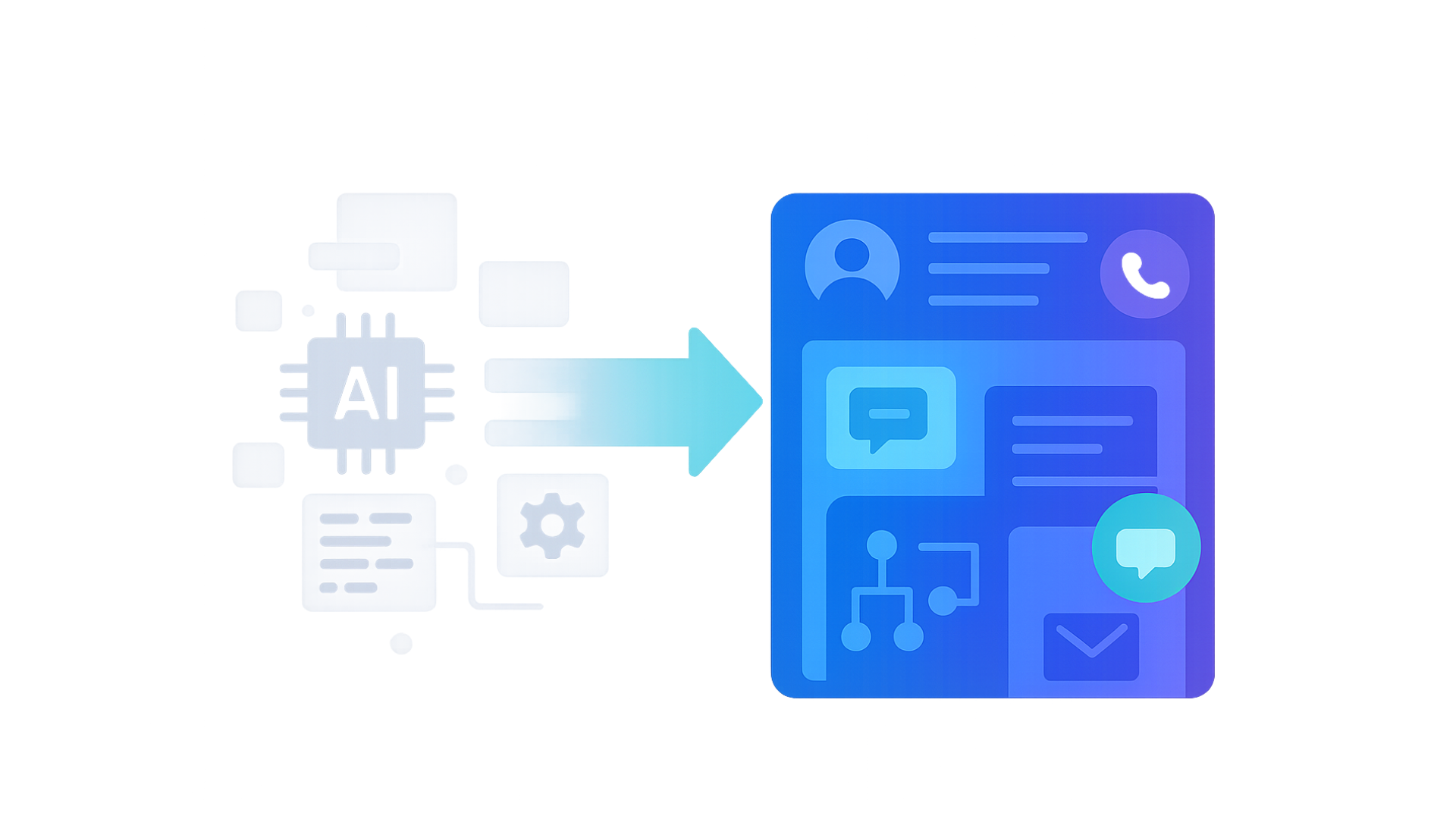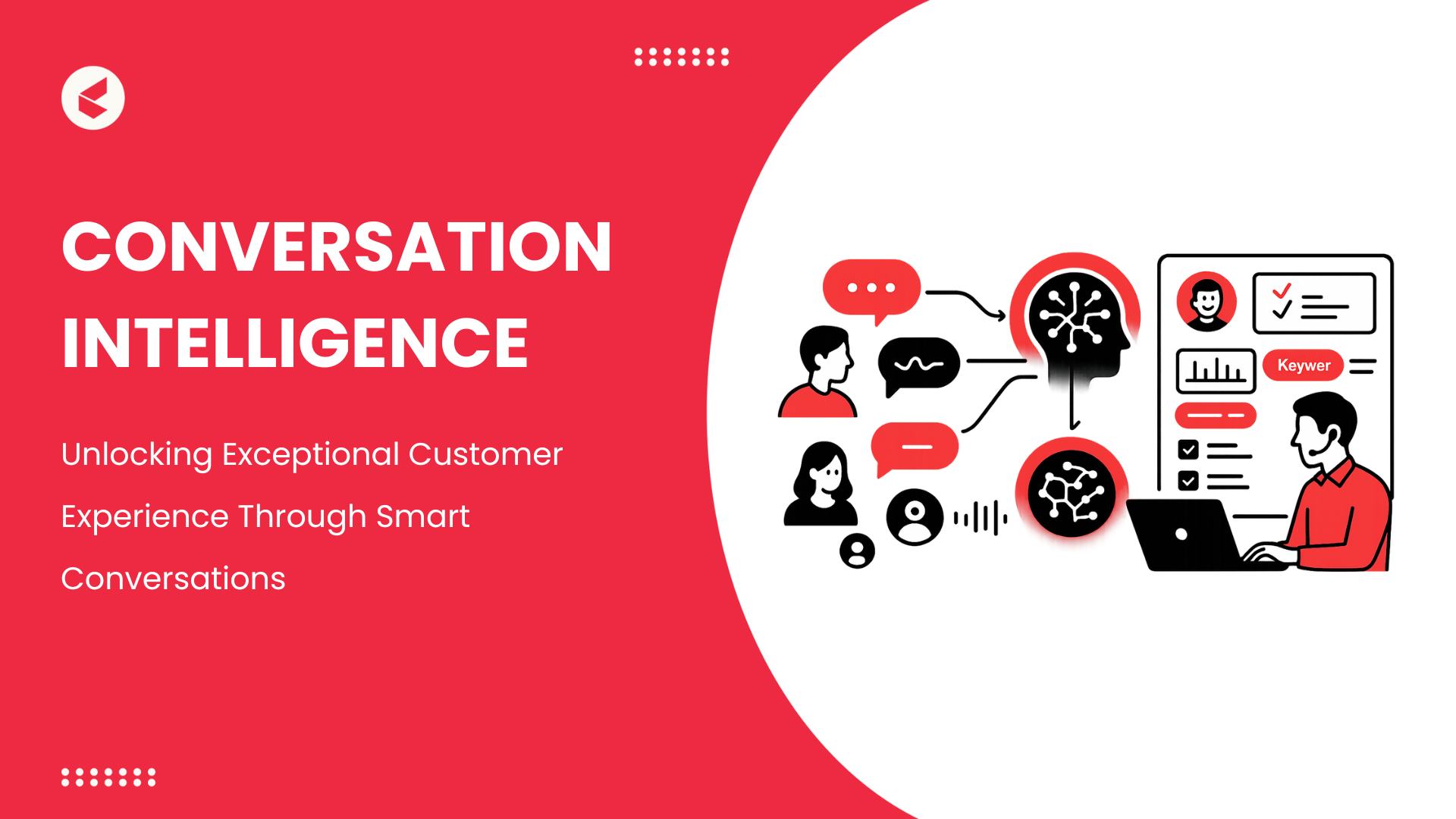Micro-interactions matter more than most metrics. They build or break trust.
— Thomas Moussafer
Is your CX workflow designed to support your tech stack or truly to serve the customer? According to Forbes, only 17% of customers find chatbots or self-help tools truly helpful, showing how often technology takes the lead while customer experience lags behind.
When you rely on monolithic system overhauls, your chatbot offers less personalized support for micro-interactions. Even small upgrades require complete redeployment. Results? Your support staff experiences outages, and customers get delayed support.
Therefore, it is important to add gradual automations into the regular workflows. These micro-automations are essentially scripts or triggers that run based on rules to manage instant customer interactions, such as refunds or order status updates.
Continue reading as we walk you through how micro-automations build a flexible support workflow that keeps customers feeling appreciated.
What Are Micro-Automations and Why Do They Matter?
Micro-automations are small, modular AI-driven tasks designed to operate independently within larger systems.
Rooted in low-code or no-code frameworks, they ensure targeted automation with minimal complexity. They are based on the idea of making small, gradual improvements that eventually yield large productivity gains.
Additionally, CX teams can easily implement micro-automations to reduce bottlenecks and simplify routine tasks.
Once your tech stack is ready, micro-automations make it more intelligent. Key benefits include:
- Ensures High-End Flexibility: Allows you to deploy or update individual agents without completely revamping systems. It helps in customizing operations quickly.
- Offers Continuous Learning: Micro-automations are designed to learn and improve over time. You can identify pain points in unstructured data and orchestrate relevant solutions across all channels. It evolves with every process.
- Helps in Data-Driven Decision Making: Micro-automations ingest and correlate data throughout your stack. It powers agents’ activities and helps in real-time decision-making.
Quick examples of how micro-automations can help CX teams –
- Auto-tag intents in customer interactions for faster routing
- Classify escalations to prioritize support efforts
- Summarize customer messages for quicker insights
- Extract key data points from unstructured content for analytics
- Route inquiries based on real-time sentiment analysis
The Problem with Monolithic Automation
Monolithic automation offers a large, all-in-one solution that appears simple to administer. But, on a technical level, this approach has downsides.
1. Rigid Systems that Resist Change
Monolithic automation systems are difficult to work with. Since they’re built as all-in-one solutions, they tend to be rigid and hard to tweak.
Adding new features or making changes isn’t exactly straightforward because everything’s tightly linked together. So, if you change one part, it often leads to tricky troubleshooting and longer development times.
2. Long, Costly Deployments that Slow Your Momentum
The deployment of a monolithic automation platform cannot be done overnight. Besides being large and complex, the systems need lengthy planning and testing for the whole deployment cycle. Consequently, the CX teams either miss fast gains or do not get a chance to adjust according to the shifting needs of the business.
3. Lackluster Personalization that Misses The Mark
According to Forbes, 81% of customers favor businesses that provide a personalized experience, and 70% say that a personalized experience where employees are aware of their identity and past interactions matters. This is where monolithic bots struggle.
The “one-size-fits-all” nature of traditional bots lacks the nuanced understanding of individual customer contexts or histories, leading to a suboptimal support experience.
The Shift: From Chatbots to AI Agents
Recognizing the specific drawbacks of large, integrated systems has clarified the reasons why enterprises are shifting towards a new approach. The new concept of AI agents is represented through autonomous, task-focused, and context-aware characteristics, which is the main reason for this shift.
Instead of depending on traditional chatbots, you can create a suite of AI agents that collaborate. Each agent has particular expertise, but they all talk to each other and share feedback loops.
AI agents do more than simply automate an interaction. They orchestrate a chain of actions leading to resolution. Let’s say:
- Agent X notices a drop in a specific product purchase rate
- Agent Y verifies previous interactions (this can even be unstructured inputs like emails or chat threads)
- Agent Z marks the customer as a churn possibility
- Without any delay, Agent A starts a retention workflow right away
This is the AI agent’s orchestration potential. Additionally, it works wonders when you view CX through an architectural lens rather than a channel lens.
Here is a quick table highlighting chatbots vs AI agents in terms of customer experience automation.
| Aspect | Chatbots | AI Agents |
| Automation Level | Rule-based, limited automation | Advanced, adaptive automation with learning capabilities |
| CX Personalization | Basic, scripted interactions | Highly personalized, context-aware interactions |
| Complexity Handling | Simple, predefined tasks | Complex, multi-turn conversations |
| Response Quality | Predefined responses, limited flexibility | Dynamic, natural language understanding (NLU) |
| Customer Satisfaction | Depends on script quality | Higher, provides relevant support |
| Integration | Limited to specific platforms and tasks | Broad integration with data sources and channels |
| Use Cases | FAQs, and simple inquiries | End-to-end customer journeys, complex problem-solving |
Examples of Micro-Automations in Action
Let’s take a look at some of the top use cases of micro-automations in support workflows across diverse industries:
1. Retail
Imagine making an internet purchase and expecting a quick return. AI agents may now automatically classify the reason for the return, eliminating the need for long forms or sitting on hold. Was it simply a change of heart, or was the item damaged?
Walmart customers are currently using a generative AI tool that is already developing into a “super agent”. It can currently review, summarize, and propose products.
2. Travel
AI is employed by travel agencies to ensure that their customers are kept informed. Imagine an agent who modifies your schedule on the fly in case of delays or cancellations, similar to having a concierge for your travel plans.
Many companies are now embedding a contextual AI agent into their support operations.
It helps in:
- Managing rebookings
- Accessing travel info
- Checking alternative flights
- Initiating refunds
3. BFSI
Financial institutions are deploying micro-automations for compliance checks and sentiment analysis.
For instance, Citi uses AI to validate transactions for fraud detection and flag negative sentiment. This helps agents quickly address compliance issues and identify unhappy customers early.
JPMorgan Chase has integrated AI for compliance validation. Their Intelligence platform automates the review of legal documents to reduce review time.
Every small win like this compounds to minimize handling times and better accuracy. It’s all about making support smarter, one micro-automation at a time.
While these examples show micro-automations’ potential, the real challenge lies in scaling these approaches systematically.
Scaling Through Modularity
As your customer experience operations grow, so does the complexity of managing multiple workflows.
According to PwC, 59% of customers will leave a business after various negative experiences, whereas 17% will do so after just one.
Therefore, if you have a scaling plan, it would be wise to first locally implement each AI agent. This allows you to test and improve intelligent workflows with minimal risk and high return on investment (ROI).
Here are the actionable steps to follow:
- Update or replace individual agents without disrupting the entire system
- Track deployment velocity to see how quickly you roll out new agents
- Monitor agent uptime to ensure consistent performance
- Measure cost per interaction to optimize expenses
- Use these insights to fine-tune your approach for better CX workflows
The Future: Agent Ecosystems, Not Automation Islands
According to Grand View Research, the global market size of AI agents is all set to reach USD 50.31 billion by 2030. The pursuit is to create ecosystems of interoperable agents that provide quantifiable value, rather than merely isolated automation islands.
Enterprises will design libraries of tiny micro-agents that work together seamlessly. These agents can chat through orchestration layers, making CX workflows smoother.
AI-powered CX operating systems, which effortlessly coordinate these intelligent agents, will become more prevalent. It’s revolutionary because it’s more responsive to customers’ needs.
How Kapture Enables Micro-Automations at Scale
Micro-automations are not just about switching to agents or modifying workflows. They are about taking control of the CX’s orchestration layer, encompassing all tools, teams, and interactions.
Since it’s composable, you don’t need to go through system overhauls. Just integrate small AI agents into blind spots and scale when required.
Still unsure? Take your support workflows from fragmented to orchestrated with Kapture CX. Our AI Agent Suite supports modular, use-case-driven agents. It scales automation iteratively without disrupting the CX infrastructure!
Our AI agent suite orchestrates intelligence, self-service, and support seamlessly by offering –
- Advanced ticketing: Facilitates triage at a large scale in an automated manner by linking each interaction into one single, context-rich log
- Smart routing: Finds out which agent is most qualified for a given ticket based on the agent’s priority and skill level
- Ticket tagging: Auto-labels tickets with issue category or intent for quicker triage
- Conversation summaries: Makes the handoffs and follow-ups faster by extracting the intent of long conversations into concise briefings
- Sentiment analysis: Identifies the customer’s tone and chooses the escalation options by understanding the customer’s emotions instantaneously
- Customer 360: Gathers all the customer insights and presents them in one single view, thereby providing agents with the full context
Wish to optimize CX workflows? See how Kapture’s AI agent suite works to offer personalized support now!
FAQs
Absolutely! Small AI agents process multimodal information to ensure hyper-personalized support across various industries.
Yes, micro-automations are lightweight and simple to set up. They are similar to building blocks that quickly enhance your existing workflows.
The future of micro-automations focuses on creating an intelligent system of agents that learns and transforms collectively.
Implementing AI agents can take a few weeks to several months. However, some deployments go live in as few as ten minutes.













